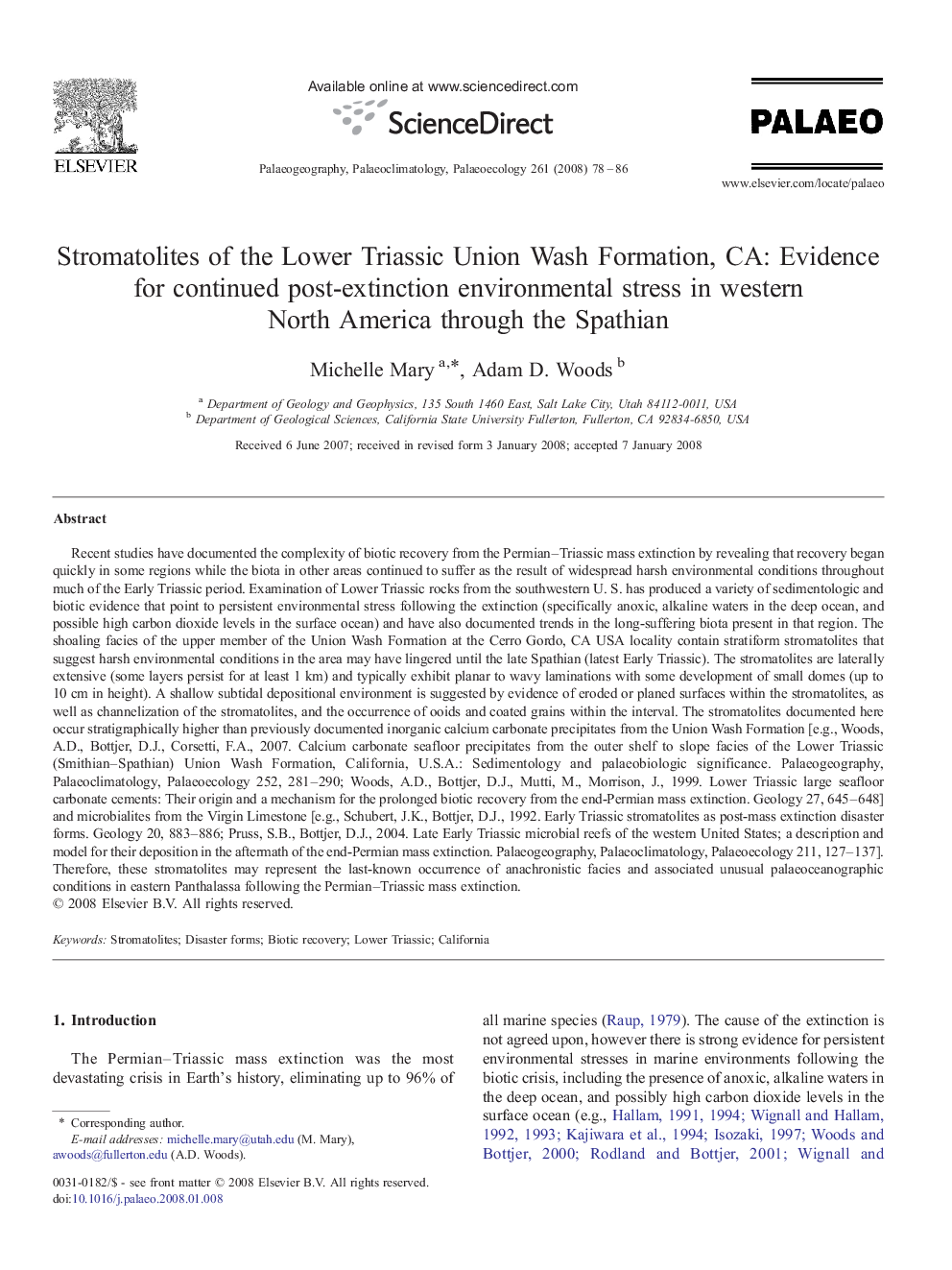| Article ID | Journal | Published Year | Pages | File Type |
|---|---|---|---|---|
| 4468525 | Palaeogeography, Palaeoclimatology, Palaeoecology | 2008 | 9 Pages |
Recent studies have documented the complexity of biotic recovery from the Permian–Triassic mass extinction by revealing that recovery began quickly in some regions while the biota in other areas continued to suffer as the result of widespread harsh environmental conditions throughout much of the Early Triassic period. Examination of Lower Triassic rocks from the southwestern U. S. has produced a variety of sedimentologic and biotic evidence that point to persistent environmental stress following the extinction (specifically anoxic, alkaline waters in the deep ocean, and possible high carbon dioxide levels in the surface ocean) and have also documented trends in the long-suffering biota present in that region. The shoaling facies of the upper member of the Union Wash Formation at the Cerro Gordo, CA USA locality contain stratiform stromatolites that suggest harsh environmental conditions in the area may have lingered until the late Spathian (latest Early Triassic). The stromatolites are laterally extensive (some layers persist for at least 1 km) and typically exhibit planar to wavy laminations with some development of small domes (up to 10 cm in height). A shallow subtidal depositional environment is suggested by evidence of eroded or planed surfaces within the stromatolites, as well as channelization of the stromatolites, and the occurrence of ooids and coated grains within the interval. The stromatolites documented here occur stratigraphically higher than previously documented inorganic calcium carbonate precipitates from the Union Wash Formation [e.g., Woods, A.D., Bottjer, D.J., Corsetti, F.A., 2007. Calcium carbonate seafloor precipitates from the outer shelf to slope facies of the Lower Triassic (Smithian–Spathian) Union Wash Formation, California, U.S.A.: Sedimentology and palaeobiologic significance. Palaeogeography, Palaeoclimatology, Palaeoecology 252, 281–290; Woods, A.D., Bottjer, D.J., Mutti, M., Morrison, J., 1999. Lower Triassic large seafloor carbonate cements: Their origin and a mechanism for the prolonged biotic recovery from the end-Permian mass extinction. Geology 27, 645–648] and microbialites from the Virgin Limestone [e.g., Schubert, J.K., Bottjer, D.J., 1992. Early Triassic stromatolites as post-mass extinction disaster forms. Geology 20, 883–886; Pruss, S.B., Bottjer, D.J., 2004. Late Early Triassic microbial reefs of the western United States; a description and model for their deposition in the aftermath of the end-Permian mass extinction. Palaeogeography, Palaeoclimatology, Palaeoecology 211, 127–137]. Therefore, these stromatolites may represent the last-known occurrence of anachronistic facies and associated unusual palaeoceanographic conditions in eastern Panthalassa following the Permian–Triassic mass extinction.
